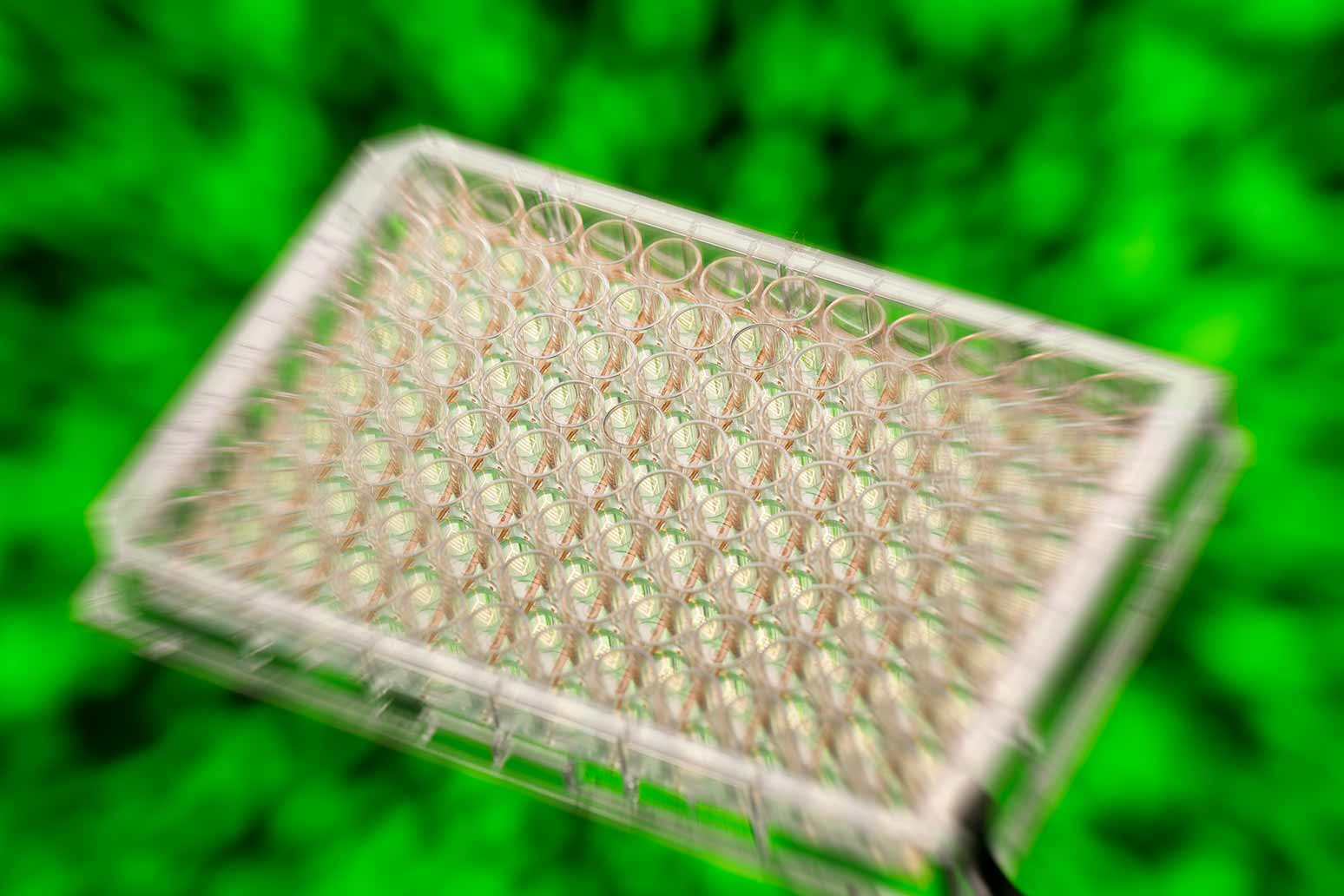Press release
Precise temperature measurement in 3D model tissues
Laboratory-cultured cells have been considered as a substitute method to reduce animal testing in drug development or toxicity testing of chemicals for many years. In the T-Sense-3D project, Fraunhofer EMFT researchers are working with partners from industry and research to develop a high-precision analytical tool for assessing the efficacy and toxicity of drugs and chemicals.

Laboratory-cultured cells have been considered as a substitute method to reduce animal testing in drug development or toxicity testing of chemicals for many years. Nowadays, such cell culture models are available for any human tissue. The trend in experimental biomedicine is increasingly moving towards three-dimensional tissue models because they represent the conditions in a living organism more realistically. In addition to tissue models that are as realistic as possible, analytical methods are also required to monitor their condition during activity tests. This is where the optical methods commonly used today often reach their limits, as visible light can only penetrate tissue to a limited extent.

Temperature measurement as the key to analyzing cell metabolism
A research team consisting of three companies and two research institutions is therefore pursuing new paths: In the “T-Sense-3D” project, which has been funded by the Federal Ministry of Education and Research BMBF in the “KMU-innovativ” funding measure since 01.10.2024, the aim is to monitor cell metabolism and its changes using high-precision temperature measurements. Temperature is a universal indicator of cellular metabolism, as only living cells generate heat. Any external influence on the metabolism leads to minimal temperature changes. New analytical methods are needed to measure these precisely. The project partners from the companies FEW Chemicals GmbH (Bitterfeld-Wolken), ibidi GmbH (Gräfelfing) and nanoAnalytics GmbH (Münster), the Fraunhofer Institute for Electronic Microsystems and Solid State Technologies (EMFT) and the Technical University of Munich are experimenting with novel materials made of tailor-made polymer chains and nanoparticle admixtures. These materials are printed in the form of tiny droplets on the bottom of cell culture vessels in order to establish contact with the tissue models. The materials change their electrical resistance many times over in a very small temperature window that can be controlled by the chemical composition of the sensor spots. By measuring the electrical resistance, high-precision temperature measurement becomes accessible.
Closing technological gaps
In the project, the temperature sensors are to be integrated into cell culture vessels using mass production methods (roll-to-roll) in order to enable efficient drug testing. The researchers are also developing customized measurement electronics and software in order to establish the new process on the market in a user-friendly way. The functionality of the overall system will be demonstrated in biological model studies.
The biomedical project aims to close a technological gap by solving a challenging material science problem: the quantitative real-time analysis of 3D tissue models with medium throughput. The new method has the potential to open up new possibilities in experimental biomedicine and addresses a market that is expected to see double-digit annual growth until 2030.
Last modified: